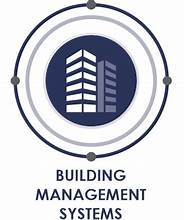Elevator & Escalator Monitoring System
Home > Elevator & Escalator Monitoring System
Elevator & Escalator Monitoring System
An elevator monitoring system is a comprehensive solution designed to monitor, manage, and optimize the performance of elevators within a building. This system utilizes a range of sensors, communication devices, and software to collect data, analyze elevator operations, and provide real-time information for maintenance and safety purposes. Here’s a detailed description of an elevator monitoring system:
FEATURES

Sensor Integration
Elevator monitoring systems incorporate various sensors placed strategically within the elevator cabin, machinery, and doors. These sensors can include accelerometers, door sensors, weight sensors, and temperature sensors to capture a wide range of data related to elevator operation.

Data Collection
The system collects and aggregates data in real-time from the sensors. This data includes information on elevator usage, door operation, acceleration and deceleration patterns, weight load, and environmental conditions.

Communication Infrastructure
Elevator monitoring systems typically leverage communication infrastructure such as IoT (Internet of Things) technology to transmit data from the elevators to a central server or cloud-based platform. Wired or wireless connectivity ensures seamless and continuous data transfer.

Cloud-Based Platform
Many modern elevator monitoring systems use cloud-based platforms for data storage and analysis. This allows for remote access to real-time and historical elevator performance data from any location with internet connectivity.

Real-Time Monitoring
The system provides real-time monitoring capabilities, enabling building managers, maintenance personnel, and stakeholders to track the current status and performance of each elevator in the building.

Performance Analytics
Elevator monitoring systems use advanced analytics to process the collected data. This includes analyzing usage patterns, identifying potential issues, and generating insights into elevator performance. Analytics can help predict maintenance needs and optimize operational efficiency.

Predictive Maintenance
One of the key features of elevator monitoring systems is predictive maintenance. By analyzing data patterns, the system can predict potential issues before they become critical, allowing for proactive maintenance and minimizing downtime.

Fault Detection and Alerts
The system is equipped with algorithms to detect faults or anomalies in elevator performance. When issues are identified, the system generates alerts or notifications to relevant personnel, enabling quick response and resolution.

Energy Efficiency Monitoring
Some elevator monitoring systems include features to monitor and optimize energy usage. This involves analyzing data to identify opportunities for energy conservation without compromising performance or safety.

Remote Control and Troubleshooting
Elevator monitoring systems may offer remote control capabilities, allowing authorized personnel to perform certain tasks or troubleshoot issues remotely. This can contribute to faster response times and reduced on-site visits.

User Interface
The system often includes a user-friendly interface accessible through web browsers or dedicated applications. This interface provides graphical representations of elevator status, analytics, and maintenance recommendations.

Integration with Building Management Systems (BMS)
Elevator monitoring systems seamlessly integrate with building management systems. This ensures that elevator data can be correlated with other building data for a holistic understanding of the building's operational efficiency.

Compliance and Reporting
The system may assist in compliance reporting by maintaining records of elevator performance, maintenance activities, and safety inspections. This information can be valuable for regulatory compliance and audit purposes.
In summary, an elevator monitoring system serves as a sophisticated and proactive tool for building managers and maintenance teams, enabling them to optimize elevator performance, enhance safety, and streamline maintenance processes.
.



